For those of us who were lucky enough to grow up when it was still possible to play in the dirt - not on concrete or asphalt playgrounds - today's session about soils was a welcome trip back to a happy childhood.
As for us at SOILS Permaculture Association Lebanon, it felt like today was our birthday and everything was really about us!
We started the day by shaking hands with soils: clay, loam, silt, and their distant cousin humus. It's important to tell what kind of soil a land has, to determine what types of plants are suited for it or what regeneration methods might be needed. Instead of going to a laboratory, there is a fun and easy way to determine a soil's composition: playing with it! The texture of a soil, its color, how easy it is to roll it into a mud ball, and other "tests" are usually a good give-away. Mixing soil with water in a jar and letting it rest also helps observe its different components as they deposit in layers, starting with the heaviest.
We took a glimpse into the relationship of soil with everything around it, from water to trees, decomposing matter, microorganisms and bacteria, mycelia, small animals, etc. Klaudia then talked us through connecting with the soil in a longer meditation exercise to become part of all the interconnected elements it supports.
Our friends from the neighboring villages had heard about our "soil testing" so each brought us soil from their village for comparison in the spirit of good-natured competition.
In the afternoon, we all worked on building a bed with mulch sheets in the garden of Bassam Khawand, our friend and a member of SOILS who is also participating in the PDC. The finished product looked so nice he immediately adopted it and promised to look after it.
That's it for today. Stay tuned to find out the secrets of trees after tomorrow's sessions.
As for us at SOILS Permaculture Association Lebanon, it felt like today was our birthday and everything was really about us!
We started the day by shaking hands with soils: clay, loam, silt, and their distant cousin humus. It's important to tell what kind of soil a land has, to determine what types of plants are suited for it or what regeneration methods might be needed. Instead of going to a laboratory, there is a fun and easy way to determine a soil's composition: playing with it! The texture of a soil, its color, how easy it is to roll it into a mud ball, and other "tests" are usually a good give-away. Mixing soil with water in a jar and letting it rest also helps observe its different components as they deposit in layers, starting with the heaviest.
We took a glimpse into the relationship of soil with everything around it, from water to trees, decomposing matter, microorganisms and bacteria, mycelia, small animals, etc. Klaudia then talked us through connecting with the soil in a longer meditation exercise to become part of all the interconnected elements it supports.
Our friends from the neighboring villages had heard about our "soil testing" so each brought us soil from their village for comparison in the spirit of good-natured competition.
In the afternoon, we all worked on building a bed with mulch sheets in the garden of Bassam Khawand, our friend and a member of SOILS who is also participating in the PDC. The finished product looked so nice he immediately adopted it and promised to look after it.
That's it for today. Stay tuned to find out the secrets of trees after tomorrow's sessions.


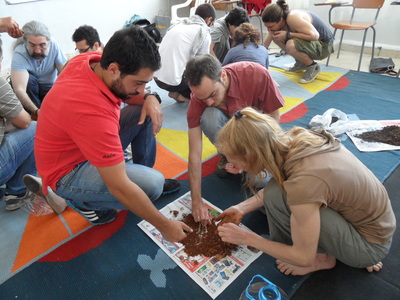
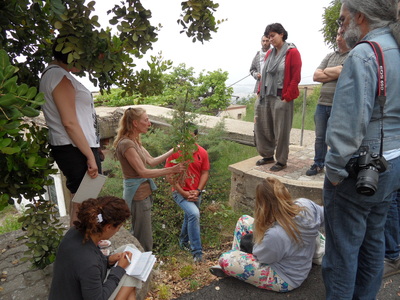

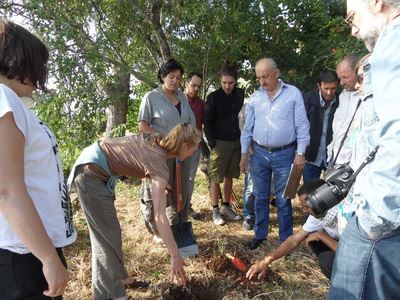
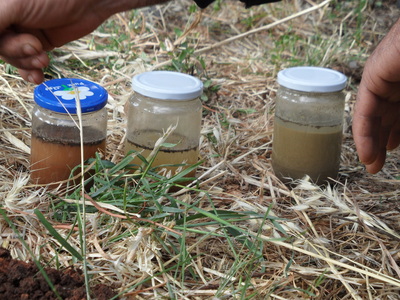


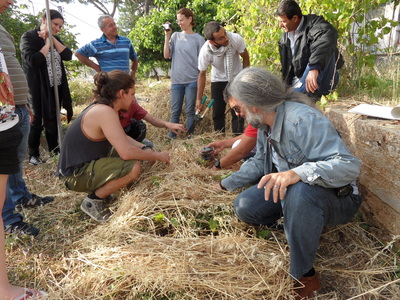
 RSS Feed
RSS Feed
